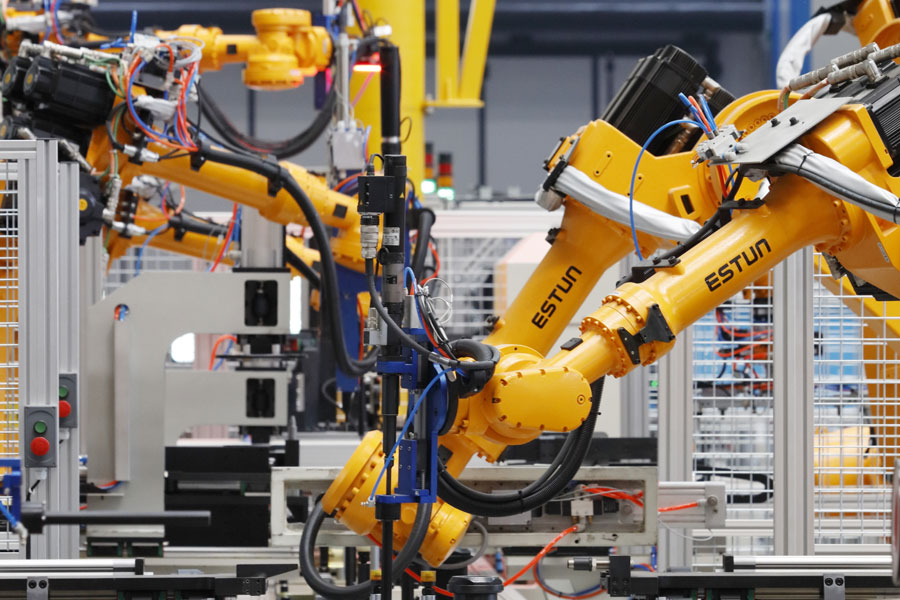
1.What is PL noodles?
PL surface, also known as: parting surface, slap ramen, refers to the part where the front mold and the back mold are in contact when the mold is closed.
2.What is bump and penetration?
The mating surface of the male and female molds parallel to the PL surface is called the piercing surface, and the mating surface of the male and female molds that is not parallel to the PL surface is called the inserting surface.
3.What is the relationship between strips and silk?
Both strips and silks are length units. Strips are in Taiwanese, 1 = 0.01mm, and silk is in Hong Kong, and 1 wire = 0.01mm, so 1 = 1 wire.
4.What is the pillow position?
There are often notches on the edges of the shell plastic parts, which are used to install various accessories. The pillow-shaped part formed here is called the pillow position.
5.What is a crater?
The shape of the reduced rubber part at the base of the BOOS column reflected on the mold after the eruption is called the mold crater.
6.What is huh?
Huh refers to Mo Ren, a idiom in Hong Kong.
7.What is a tiger’s mouth?
Tiger mouth is also called: tube position, that is, the part used to limit the position.
8.What is ranking?
The product layout on the mold is called ranking.
9.What is the glue bit?
The cavity of the product on the mold is called: the glue position.
10.What is bone position?
The tendons on the product are called: bone position.
11.What is column position?
The BOSS column on the product is called: column position.
12.What is empty position?
The gap on the mold is called: virtual position.
13.What is a deduction?
The hook used for connection on the product is called: buckle.
14.What is the fire pattern?
The pattern left after EDM is called the fire pattern.
15.What is a copper worker?
EDM usually uses easy-to-process copper materials as discharge electrodes, which are called copper workers or electrodes. Copper workers are generally divided into rough workers, rough workers, young workers, and young workers, also called fine workers.
16.What is the spark level usually?
During the discharge process, the discharge gap between the copper and steel is called the spark level. The rough spark level is generally 15 to 50, and the young spark level is generally 5 to 15.
17.What is the material level?
The avoidance of plastic products is also called thick.
18.What is the original stay?
The original body stay is relative to the cutting insert. The original body stay refers to a whole piece of steel as a processing blank, which is processed together during processing.
19.What is a weld line?
The line formed by the meeting of two strands of plastic is called a weld line.
20.What is a jet stream?
After the plastic enters the cavity from the plastic inlet, it forms a curved and folded snake-like flow mark called a jet.
21.What does DME mean and what does HASCO mean?
The standard of standard parts, DME is made in the United States, and HASCO is made in Europe.
22.What is an undercut?
The part of the product that cannot be directly demolded from the front and rear molds becomes an undercut.
23.What is foolproof?
Fool-proof is an idiom, which is to prevent a very simple mistake and prevent a daze! For example, if an insert is made of the same size hanging platform on the heaven and earth side, it is very likely that the heaven and earth side will be installed upside down during the on-site assembly, but he will make the hanging platform on the side of the insert. You can’t put it in, and it’s impossible to put it wrong. This kind of action to prevent errors from being in a daze becomes a daze.
24.What is a beer machine?
Beer machine is a local idiom, which is what we often call injection molding machine, molding machine.
25.What is a stop mouth?
The mouth is the art line of the mouth, also known as the ugly line.
26.What is flying model?
The flying model is the matching model or standard model.
27.What is a light knife?
The action of CNC finishing is called light knife, which is to process in place on the basis of roughing.
28.What is frame opening?
The action of processing the position of the mold core on the mold base is called frame opening.
29.What is anti-huh?
The method of inverting the front and rear mold material positions under normal conditions to open the mold is called reverse.
30.What is floating?
The ejection method in which small inserts are used to eject the part where there is an undercut is called floating.
31.What is pre-eating?
When the mold is opened, the product stays in the front mold is called the front mold.
32.What is top white?
When ejecting, the mold force required is relatively large, and the ejector pin is not strong enough, so that the product is partially ejected. From the front of the product, there is an obvious white as the top white, which is also called the top nozzle.
33.What is baking?
The marks left by the entry point on the exterior surface of the system during diving are called bake marks.
34.What is a yard?
The code is a clamping tool, a kind of cushion block with a triangular inclined surface opening slot.
35.What is overcutting?
Overcutting refers to excessive cutting, that is, the parts that do not need to be processed are also processed when processing the workpiece. Overcutting is not good.
36.What is the school cup?
The front mold pops out of the mold opening position.
37.What is Yata?
Tapping. Tapping the thread is called Yata.
38.When do two-color molds need to be made?
When a product contains two different materials or different colors of the same material, design a two-color mold for molding.
39.What is the mold design process of the factory?
Customers provide product drawings → analyze products → confirm plastic varieties → confirm mold materials → transfer engineering drawings → multiply and shrink to make mirrors → improve assembly drawings → order mold embryos → order mold core materials → draft → 3D parting → determine runners /Gating method→Refer to the ranking drawing for structural design→dismantle inserts→correct 3D→project drawing “including: mold core/insert/mold blank/parts”→make BOM table→proof and review.
40.How many ways are there for demoulding?
Smooth and strong.
41.What are the ways to feed glue?
Direct glue feeding → overlapping glue feeding → side glue → ring feeding glue → sheet feeding glue → latent type → dispensing glue → horn type glue feeding → fan-shaped glue feeding.
42.What is the general slope of the slider, and what is the general slope of the oblique guide column?
The inclination of the slider is generally 20 degrees, and the inclination of the oblique guide column is generally 18 degrees.
43.The role of cold feed wells?
The function of the cold slug well is to store the small part of the plastic material with lower temperature that enters the mold first.
44.The role of the positioning ring?
The function of the positioning ring is to ensure the correct relative position between the mold and the injection machine.
45.The relative position of the fit?
There are three main types of fit: clearance fit, transition fit, and interference fit.
46.What is the role of inserts?
It is convenient for processing, prevents carbon deposits, facilitates polishing, saves materials, helps exhaust, facilitates replacement, and reduces processing machines.
47.What kinds of indexes of hardness are there?
Hardness indicates the ability of a material to resist hard objects pressed into its surface. Commonly used hardness indicators are Brinell hardness, Rockwell hardness and Vickers hardness.
48.What is the difference between the first angle method and the third angle method?
The first corner painting method: the left view is placed on the right, the right view is placed on the left, the upper view is placed below, and so on;
The third triangle drawing method: the left view is placed on the left, the right view is placed on the right, the upper view is placed on top, and so on.
49.What are the basic principles of the three views?
The basic principles of the three views are: the length is aligned, the height is flush, and the width is equal.
50.How many ways are there to transport water?
Commonly used types of water transportation are: straight-through, surround, water tower, and spiral.
51.What is the overflow value?
The overflow value refers to the size of the gap where the plastic product will overflow, (that is, the running edge) a value. The overflow value of ABS is: 0.04mm, the overflow value of pc: 0.06mm, the overflow of pA Edge value: 0.015mm, suitable wall thickness of POM: 0.04mm, PBT+15%GR overflow value: 0.03mm, PBT+30% overflow value: 002mm, PMMA overflow value: 0.065mm, PVC overflow value: 0.07mm, AS overflow value: 0.05mm, ps overflow value: 0.05mm, pp overflow value: 0.03mm, PE overflow value: 0.02mm.
52.What is elastic deformation? What is plastic deformation?
The object deforms under the action of external force. When the external force disappears, the object can return to the deformation before the deformation is called elastic deformation. When the external force disappears, the deformation of the object before the deformation is called plastic deformation.
53.What is the role of water transport?
The role of water transport is to control the temperature of the mold core.
54.What is the pouring system?
The plastic flow channel from the nozzle of the injection machine to the cavity is called the pouring system. The pouring system includes the main runner, the runner, the gate and the cold slug well.
55.What is reverse engineering?
Reverse engineering is the accurate and high-speed scanning of the existing sample or model by a high-speed 3D laser scanner to obtain its 3D contour data, cooperate with the reverse software to reconstruct the curvature, and perform online accuracy analysis and evaluation of the reconstructed surface. The structure effect and the final generation of IGES or STL data can be used for rapid prototyping or CNC machining.
56.What are the common defects of plastic parts?
Lack of glue→cloak→bubble→shrinkage→weld mark→black dots→stripe→lifting→delamination→peeling
57.Which type of material is used for high mirror polishing?
Commonly used high-hardness heat-treated steel, such as: SKD61, 8407, S136
Link to this article:57 kinds of industry terms in the mold industry, how many do you know?



